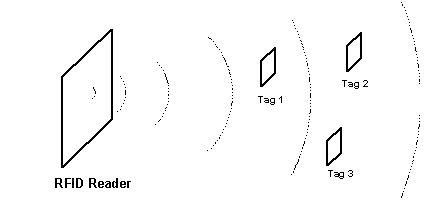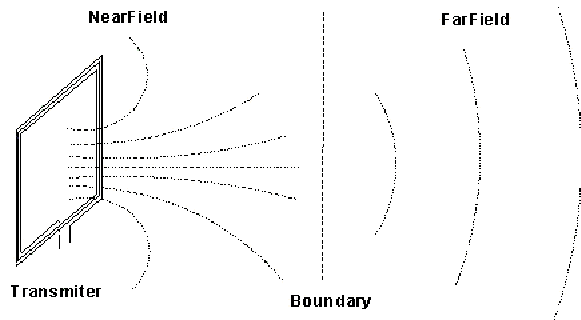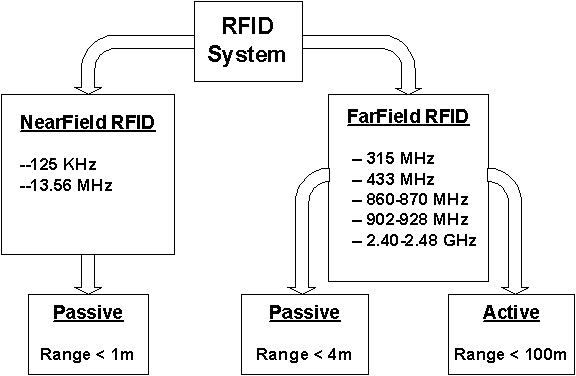
The concept of RFID systems originated in the 1940's as a means of distinguishing friendly aircraft from enemy aircraft. Large powered RFID tags, or transponders, were placed on friendly aircraft. When interrogated by a radar signal, these transponders would give the appropriate response to identify the carrying aircraft as `friendly.' This IFF (Identify: Friend or Foe) system was the first obvious use of RFID and present day aviation traffic control is still based on IFF concepts.
The invention of the microchip and subsequent technological advances led to the design and use of passive RFID tags (tags that could be read without the use of on-tag power, such as batteries). The lack of on-tag power reduces their cost, but forces passive RFID tags to obtain their power from the interrogation signal of the tag reader. The minimal power obtained in this manner limits their read range to a few feet.
 |
A basic set of RFID system is as shown in Figure 1. It consists of a reader and a set of tags. Each tag has a unique identification number (ID) stored in it, which identifies the object to which the tag is attached. The communication between the reader and tags begin when the tags enter the electromagnetic field of the reader. In passive RFID system, the tag (batteryless) extracts its power and data from the RF field and reply the reader by reflecting the energy back to the reader. In active RFID system, the tag (battery operated) extracts the data from the RF field and transmit its own signal back to the reader. Compared to other identification technologies like barcode and smart card, RFID is gaining popularity due to its following feature:
Embeddable
The RFID reader can read the tags without line of sight. As RF can penetrate through air, paper, wood, cement, etc. RFID tags can be embedded in non-metallic items like wood and concrete blocks.
Contactless Read/Write
Besides reading capability, information can be written wirelessly onto the tag.
Multiple read
Some versions of RFID system have anti-collision software in them; this means that a number of tagged items can be read at the same time.
RFID Classifications
 |
RFID system is broadly divided into 2 categories, namely Nearfield RFID and Farfield RFID. With reference to figure 2, the reader emits a Radio Frequency (RF) wave by creating an electromagnetic field in the air. NearField occurs at a distance less than l/2p ,where the magnetic field dominates (Note: l is wavelength of the RF wave which is frequency dependent). FarField occurs at a distance greater than l/2p , where the electric field dominates. The NearField RFID tag antenna is actually a coil, its physical size has little dependence on the RF used. It can be as small as a 1cm in diameter. The FarField RFID tag antenna is usually a dipole that is half a wavelength long and is thus dependent on the frequency used. In general, the higher the frequency, the smaller the Farfield RFID tag antenna.
 |
Figure 3 shows the classifications of the RFID system in general. The passive Nearfield RFID tag usually can read up to 1 m, the passive (batteryless) Farfield tag can read up to 4 m and the active FarField tag can go as far as 100m. It is to be noted that the 125 KHz and 13.56 MHz frequency is not suitable for Farfield RFID because it would need a tag antenna that is at least 10 m long which is impractical.